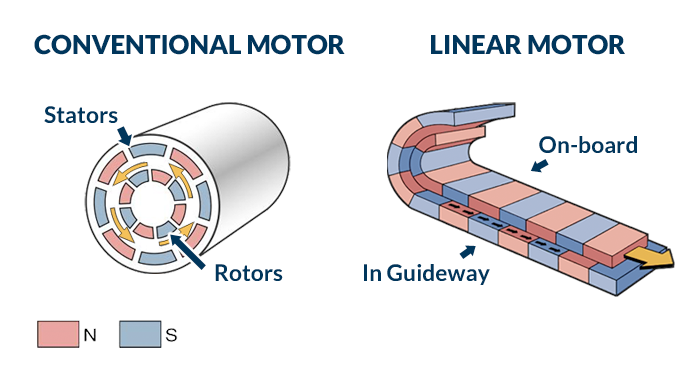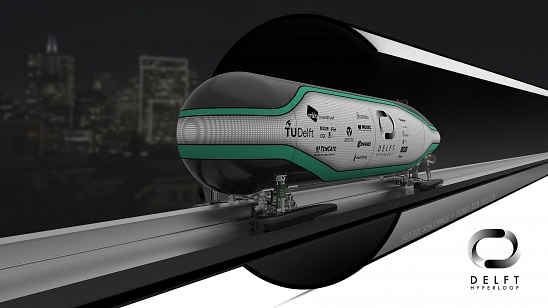7.3.3 Hyperloop
The Pods
The pods, also called capsules, are the vehicles carrying passengers from point A to point B. These pods have an aerodynamic shape and will travel through narrow tubes. You might be wondering how that is possible. Normally, whenever a pod is moving at high speed through a tube containing air, there is a minimum tube-to-pod area ratio known as the Kantrowitz limit. This limit makes sure that the walls of the tube and pod are not too close to each other, resulting in the capsule wanting to push the air out of the tunnel. If you imagine the tubes being several hundred kilometers long, this would require immense amounts of energy. Therefore, to make the tubes narrow enough, something is needed. This problem could be solved by either removing the air inside the tube, creating a vacuum or actively transporting the air from the front of the pod towards the back of the pod.
Creating a hard or near-hard vacuum inside a room is already difficult, so trying to create a vacuum inside a 1000 kilometer tube is near impossible. One small leak or crack in a tube, and the whole system would collapse. Therefore, a hyperloop could not be realizable with a hard vacuum. Something that could work, however, is a partial-vacuum system where air is only pumped out of the tube right in front of the pod.
A second solution, as proposed by Elon Musk, is to actively transfer high pressure air from the front to the rear of the pod by using an electric compressor fan in the nose of the pod. This compressor maintains a reduced pressure in the tube, removing the air drag, and uses the oncoming air for levitation and to a lesser extent propulsion.
Hyperloop
Propulsion
The propulsion of the Hyperloop is very similar to the maglev train. Since a conventional wheel and axle system would become impractical at high speed because of frictional losses and dynamic instability, the magnetic levitation system is preferred. In this design, the force is produced by a linearly-moving magnetic field acting on conductors in the field. Any conductor, be it a loop, a coil, or simply a piece of plate metal, that is placed in this field will have eddy currents induced in it and thereby creating an opposing magnetic field in accordance with Lenz’s law. The two opposing fields will repel each other, creating a motion as the magnetic field sweeps through the metal.

Image from The NorthEast Maglev
As the vast majority of the Hyperloop travel distance is spent coasting, the capsule does not require continuous power to travel. Therefore, this linear induction motor will be used to accelerate and decelerate the pods at the beginning and end of the tubes. In between the remaining couple hundred kilometers, the guideway (stator), which will be placed in sections as a continuous stator, would be very expensive. These sections will help to keep the pods at the same speed.
http://ieeexplore.ieee.org/stamp/stamp.jsp?arnumber=627444
Competition
To get the Hyperloop up and running in a short term future, Elon Musk as founder of SpaceX organized a Hyperloop competition, where teams of innovators and students would create their own pod, that would run in a scaled test track at the headquarters of SpaceX in Hawthorne, California. Each pod would be judged upon performance in flight and operations, safety and reliability, and design and construction. The fastest pod award went to the students of the WARR Hyperloop of the Technical University of Munich, but the best overall score went to the Delft Hyperloop of the Technical University of Delft. As the first competition was such a success, a second one was organized to focus on a single criterium: speed.




